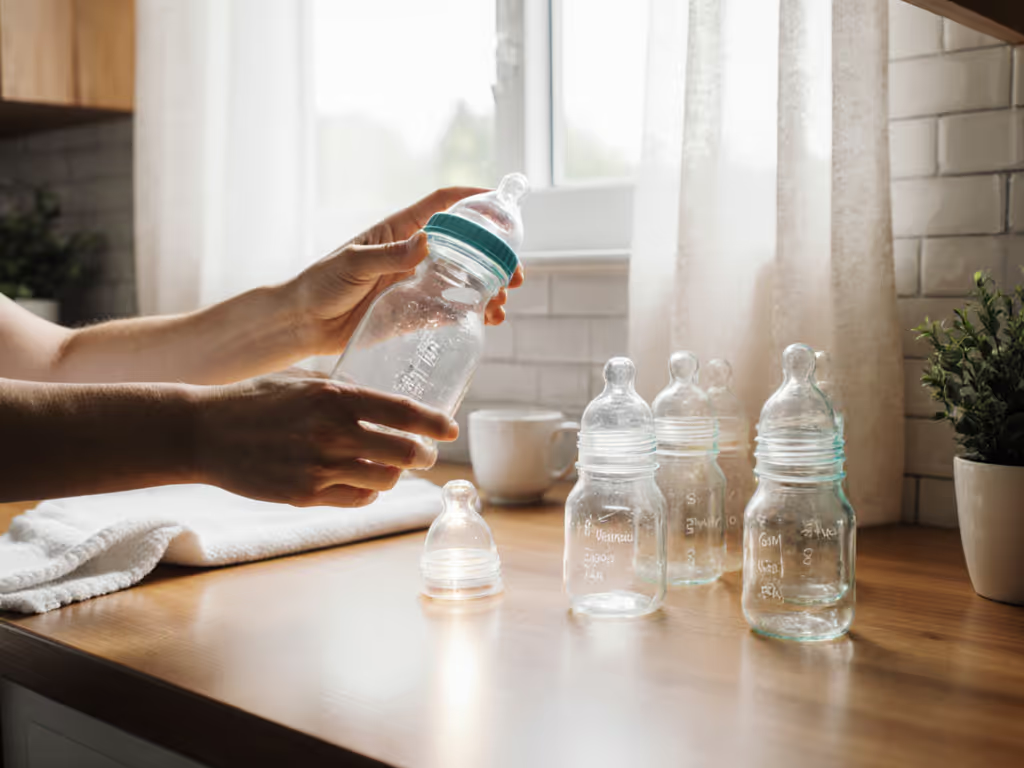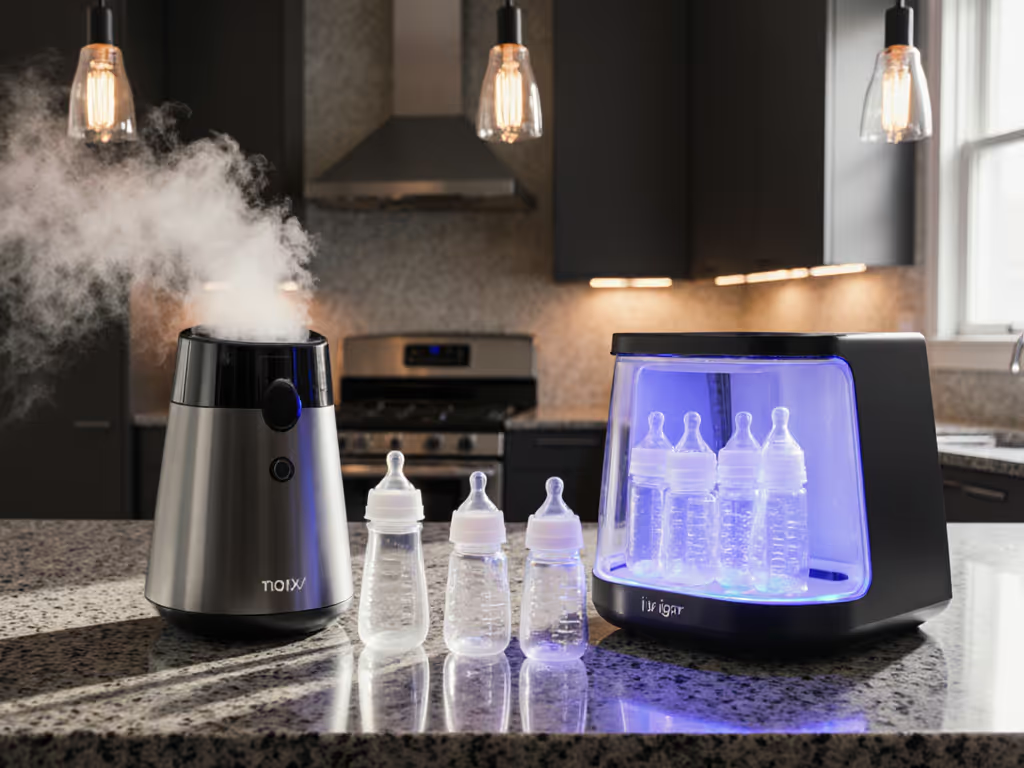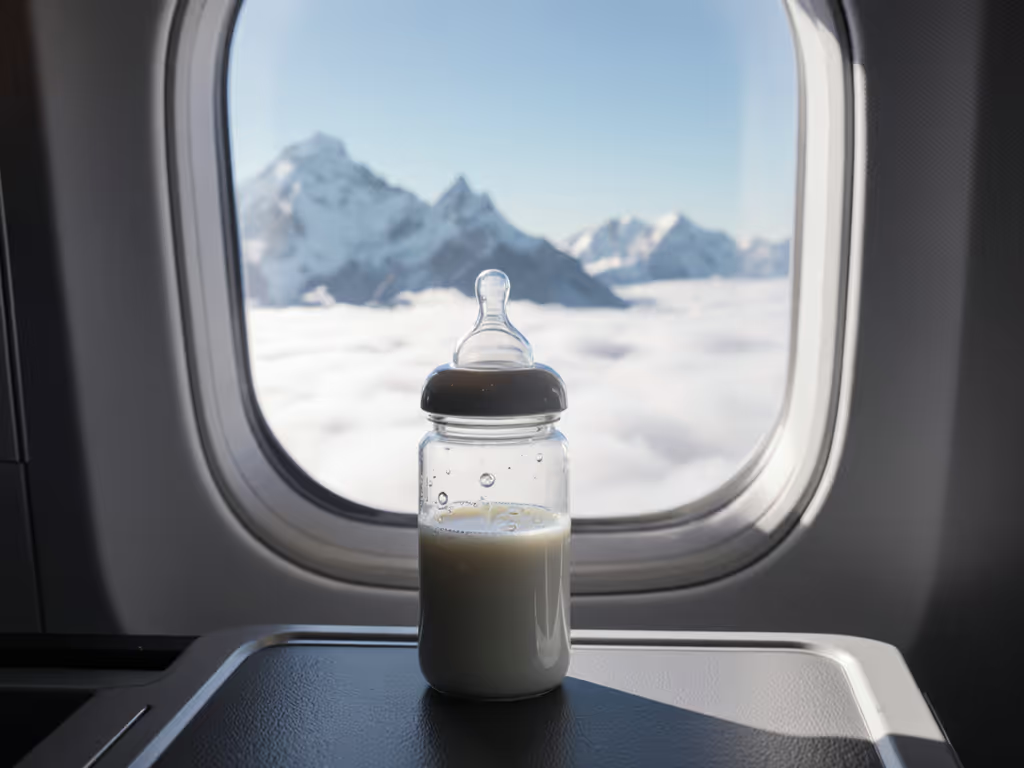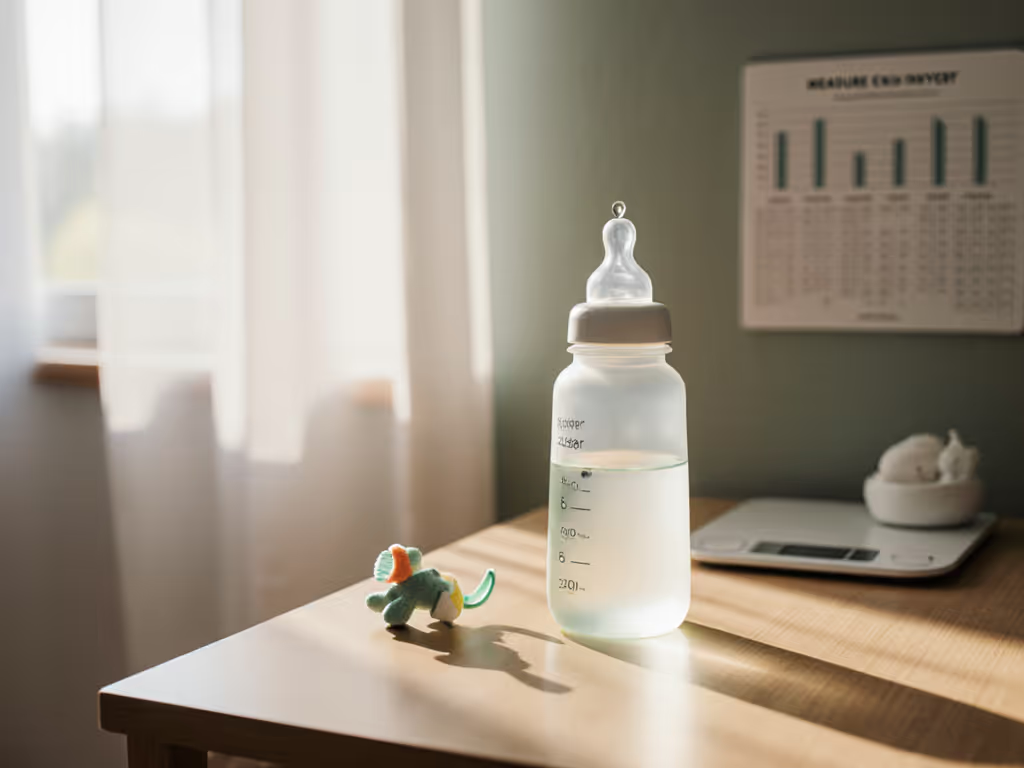
Secondhand Bottle Safety: Your Inspection Checklist

Let's talk about secondhand bottle safety and the smart way to approach a used baby bottle. If you're considering secondhand bottles to save money or reduce waste, you need more than hope (it demands a clear inspection routine). Sleepless parents don't have room for guesswork. I learned this scrubbing dried formula off a hand-me-down bottle at 3 a.m., with neon sticky notes mapping flow rates stuck to the fridge. Simple steps beat frantic improvisation, always. Today, you get a fatigue-tested checklist. Execute it in under 10 minutes. Breathe easier by morning.
Why This Checklist Exists (And Why Skip Advice Doesn't Help)
Most articles just say "Don't buy used bottle nipples." True, but unhelpful when you're holding a gently used bottle set from your sister-in-law. You need actionable criteria, not absolutes. The CDC confirms germs multiply fast in improperly cleaned bottles, and worn nipples cause flow mismatches (a top reason for gagging or refusal). Get step-by-step hygiene and sterilizing advice in our bottle cleaning guide. Yet discarding functional gear feels wasteful. This checklist solves both: it identifies safe reused bottles while rejecting risky ones. No judgment, no fluff, just a field-tested path through the noise.

Your 4-Step Secondhand Bottle Safety Checklist
Do this before accepting or buying any used bottle. Each step takes 1-5 minutes. One card, one choice. Follow in order.
Step 1: Pre-Inspection Prep (2 min / Easy)
Gather supplies. Skip guesswork about "clean enough."
- Grab these: White vinegar, mild dish soap, soft bottle brush, clean towel, magnifying glass (phone zoom works). Why? Vinegar reveals hidden residue; magnification spots micro-tears.
- Wear gloves. Why? Skin oils mask cracks; gloves keep your hands germ-free during inspection.
- Run hot water over the sink basin for 30 seconds. Why? Warm surfaces prevent steam fog on bottle parts during testing.
Shrink the choices, follow the steps, breathe through feeds.
Step 2: Visual Wear Indicators (3 min / Medium)
Spot hidden damage. If you skip this, flow issues will happen.
Hold each part against bright light. Check for:
- Nipples: Stretch the base gently. Look for:
- White stress lines near the collar (indicates silicone fatigue)
- Thinning walls (hold near light; healthy nipples look opaque, not translucent)
- Discoloration beyond light yellowing (pink/orange = mold exposure; deep brown = formula burn)
- Bottles & Collars: Rotate slowly under light. Reject if you see:
- Scratches inside the neck (harbors bacteria; won't sanitize fully)
- Cloudiness in plastic (sign of chemical degradation from dishwasher heat)
- Cracks in threads (causes leaks; hard to spot without light inspection)
Time-saver: Only inspect one nipple per flow level. If it fails, discard all matching nipples. If you're unsure which nipple stage to keep, see our nipple flow rate guide.
Step 3: Squeeze Test: Flow & Seal Check (1 min / Easy)
Simulate baby's suck. This catches 90% of failure points.
- Fill bottle 1/4 full with water. Attach nipple and collar tightly.
- Squeeze the nipple bulb firmly 5 times. Pass: Water drips steadily, no bubbles. Fail: Water gushes (too fast) or won't flow (collapsed nipple).
- Tilt bottle sideways while squeezing. Pass: No leaks at nipple-collar junction. Fail: Any dripping = cracked seal.
- Flip bottle upside down, shake gently. Pass: Water stops flowing when shaking stops. Fail: Continuous drip = defective anti-vacuum vent.
Why this works: Mimics baby's real-time pressure changes. If it fails here, it will fail during feeding.
Step 4: Compatibility Cross-Check (5 min / Medium)
Avoid daycare disasters. Your last bottle must match existing gear.
- Match nipple size to bottle brand. Example: Philips Avent nipples only fit Avent bottles (not Evenflo). Why? Mismatched threads cause slow leaks.
- Test pump adapter fit if pumping. Screw bottle onto pump flange. For detailed compatibility charts and adapter options, see our bottle-pump compatibility guide. Pass: Snaps on smoothly with 1/4 turn. Fail: Wobbles or requires force.
- Verify warmer compatibility. Place bottle in your warmer. Pass: Sits straight without tipping. Fail: Bottle leans = uneven heating.
Pro tip: If using daycare, confirm their bottle requirements first. Many centers reject hand-me-downs over liability, so save yourself the rejection.
What to Do With Bottles That Fail (Zero Guilt)
If a bottle fails any step above, recycle it responsibly. Glass? Wrap in paper, label "broken," and discard in an outdoor bin. Plastic? Check the resin code (bottom). Codes #5 (PP) or #7 (Tritan) are often accepted curbside. Never donate failing bottles; "saving money" isn't worth reflux or choking risks.
When to Choose New Over Used (Your Bottle Replacement Checklist)
Even new bottles need replacing. Track these bottle wear indicators:
- Nipples: Change every 4-8 weeks (or immediately if cracks appear)
- Plastic bottles: Replace after 6 months or if cloudy/scratched
- Glass bottles: Discard if any chips appear on the rim
- All bottles: Sterilize after illness (strep, stomach flu); replace nipples afterward
Look for these eco-friendly bottle options when upgrading: Glass with silicone sleeves (dropsafe), Tritan plastic (BPA-free, dishwasher-proof), or stainless steel (for toddlers). For a deeper look at materials, certifications, and environmental impact, explore our sustainable baby bottles guide. But note: "Eco-friendly" doesn't mean sanitizable (avoid bamboo composites, which trap bacteria in pores).
Final Thought: Safety Isn't Optional, But Stress Is
Secondhand bottle safety starts with your checklist, not resale listings or well-meaning hand-me-downs. Clear steps build confidence when sleep is scarce. That night I mapped feeds on sticky notes? The breakthrough wasn't the notes, it was trusting the process. Bottle refusal dropped 80% once flow matched our baby's rhythm. No magic. Just method.
One card, one choice. Execute it tonight.
Your Actionable Next Step
Grab one used bottle from your stash right now. Run Steps 1-3 of this checklist. Takes 6 minutes max. If it passes, you've expanded your safe feeding arsenal. If not, you've dodged a 2 a.m. meltdown. Either way, you win. Do it before bed. Sleep better knowing your gear earned its spot.
Related Articles


Steam vs UV Sterilization: Pick Your Bottle Method Match

High Altitude Bottle Feeding: Fix Leaks & Flow Now

Bottle Feeding Infants' Dental and Speech Development Impact

